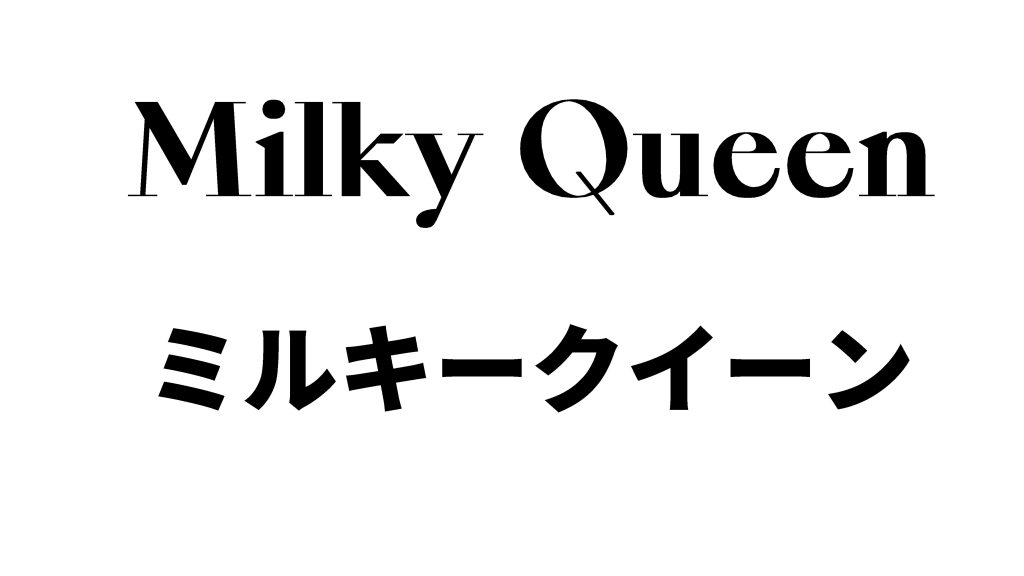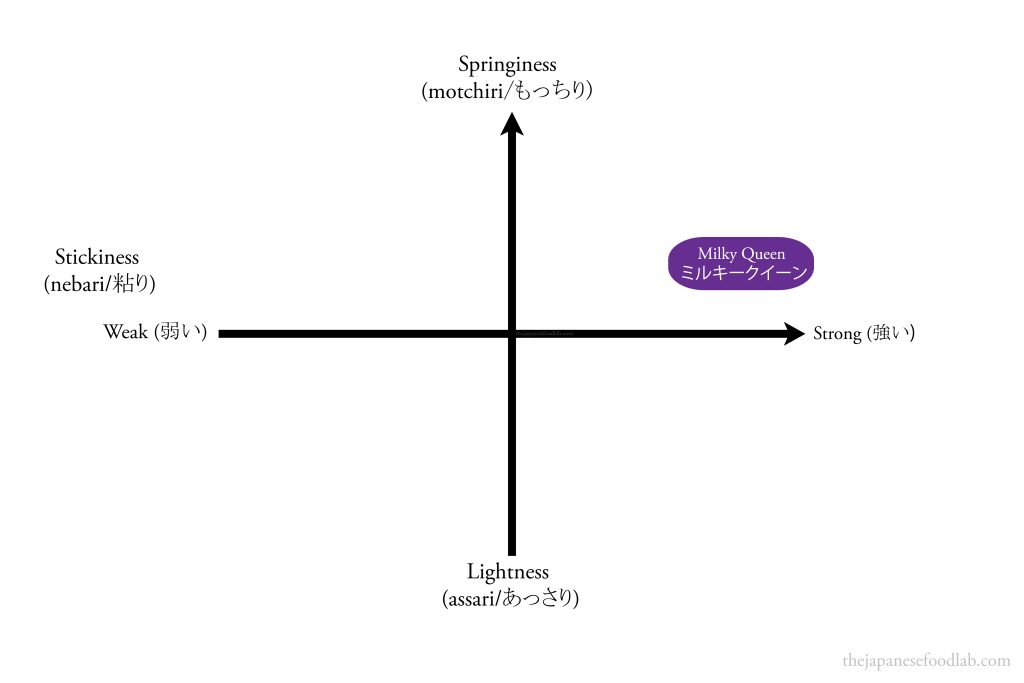
Why is Milky Queen rice special?
To find out more about other varieties of Japanese rice, see our main page.
Milky Queen rice is a variety with a remarkably low amylose content, giving it a distinctive chewy and fluffy texture.
Rice consists of two different kinds of starch in varying proportions- amylopectin and amylose. The higher the proportion of amylopectin, the stickier the rice. For example glutinous rice is made entirely out of amylopectin and no amylose, giving it its chewy and sticky characteristic that allows it to be molded into mochi or rice cakes.
Most varieties of Japanese rice have varying levels of amylose, but Milky Queen is unique in that it has been bred to only produce a low and narrow range of amylose between 9-12%. The low amylose content also means that the proportion of amylopectin increases, resulting in it’s stickier and more delectable texture, whilst still not being overly glutinous. The high amylopectin content also prevents the rice from hardening when cooled, allowing it to maintain its texture when stored for longer periods of time.
As a variety, it isn’t super well adapted to cold temperatures but thrives in regions from Kyushu to Kanto. Its northern limit lies around Yamagawa Prefecture after which it struggles to grow.
Further information about Milky Queen rice
Historically, many of Japan’s most iconic rice varieties, from Tsuyahime to Ginga no Shizuku, have been created through breeding programs that have been funded by individual prefectures. This makes sense, as there exists fierce competition between the various prefectures for their share of Japan’s rice market. With the decline of rice consumption in Japan over the last decade that doesn’t seem to have an end in sight, this competition has only gotten fiercer.
However, not all breeding programs are carried out at a prefectural level. At a national level, the Ministry of Agriculture, Forestry and Fisheries have previously carried out extensive research in order to produce new varieties of rice that are resistant to disease and more adaptable to different climates. One such example has been the Super Rice Project that started in 1989 and continued until 1994, which’s main success story was the discovery of the Milky Queen rice variety.
The Milky Queen variety arose as a mutation from Koshihikari rice that caused higher levels of amylopectin in the endosperm, leading to greater glutinosity.
Milky Queen’s name and logo design concept
As Milky Queen was not funded by a prefectural breeding program, it did not launch with a marketing campaign and thus does not come with its own logo or design concept.
Milky Queen’s Japanese Grain Inspection Association Ranking
Since coming onto the market, Milky Queen has not won a Special A ranking. This is most likely because it does not have a large enough production in any specific prefecture and is instead spread across the entire country.

How does Milky Queen rice taste?
We recommend reading our article on how rice is evaluated in Japan and our in depth discussion on how rice selection charts work to better understand this section.
From our experience, Milky Queen’s has a pillowy texture that is not overwhelmingly sticky. It also has a clean taste with no distinct negative characteristics. Its grains are moderate in size, making it a versatile rice to use in a variety of dishes.
We feel that it is a great substitute for Koshihikari rice for those who prefer a softer mouthfeel, whilst also being at around the same affordable price bracket. When cooked, it has a tendency to become overly glutinous if cooked with too much water, and so we recommend leaning on the side of caution and using slightly less water to cook it (about 5 to 15% less).
As an interesting comparison, we recommend trying it against Yumepirika produced in Hokkaido as it is another low amylose rice that has the same glutinous characteristics. In fact, Yumepirika has won the special A ranking multiple years in a row but from our tasting, has a tendency to have a musky wheat like smell to it. It also has grains which are far larger compared to that of Milky Queen’s, which makes us feel that it is more appropriate for dinner meals, whilst Milky Queen is suitable for dishes at any time of the day.